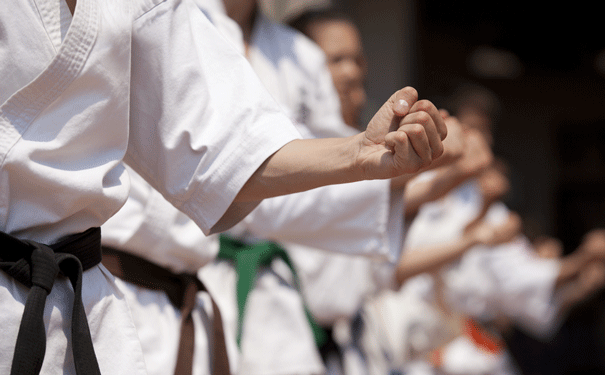
The force generated by a punch from an expert is not determined by muscular strength. Image: wellphoto
The brain structures of karate experts reflect their punching ability.
Karate experts are able to generate extremely powerful punches, but scientists haven’t understood how they do this. Previous studies have indicated that the force is not determined by muscular strength, suggesting that factors related to the brain’s control of muscle movement might play a role.
A research team, led by Dr Ed Roberts from Imperial College London in the UK, found that differences in the brain’s white matter structure correlated with how black belts and novices performed in a punching test. “Most research on how the brain controls movement has been based on examining how diseases can impair motor skills,” says Roberts, who led the study published in Cerebral Cortex. “We took a different approach, by looking at what enables experts to perform better than novices in tests of physical skill.”
He and his team looked for differences in brain structure between 12 black belt karate practitioners and 12 other individuals who exercised regularly but did not have any martial arts experience. The scientists tested how powerfully these subjects could punch, using infrared markers on their arms and torso to capture the speed of the movements. Not surprisingly, the karate group punched harder: the power of their punches seemed to be down to timing and how well the shoulder and wrists movements were synchronised.
The brain scans, called diffusion tensor imaging (DTI), revealed there were also structural differences in the white matter regions (the cerebellum and motor cortex) which are involved with microscopic structure of some regions of the brain differed between the two groups. The differences measured in the cerebellum correlated with the synchronicity of the movements, suggesting that the structural differences are related to the experts’ punching ability.
“The karate black belts were able to repeatedly coordinate their punching action with a level of coordination that novices can’t produce,” Roberts explains. “We think that ability might be related to fine tuning of neural connections in the cerebellum, allowing them to synchronise their arm and trunk movements very accurately.”
The DTI signals also correlated with the age at which the martial artists had begun training and their total experience of karate. “We’re only just beginning to understand the relationship between brain structure and behaviour, but our findings are consistent with earlier research showing that the cerebellum plays a critical role in our ability to produce complex, coordinated movements.”
Source: Imperial College London






